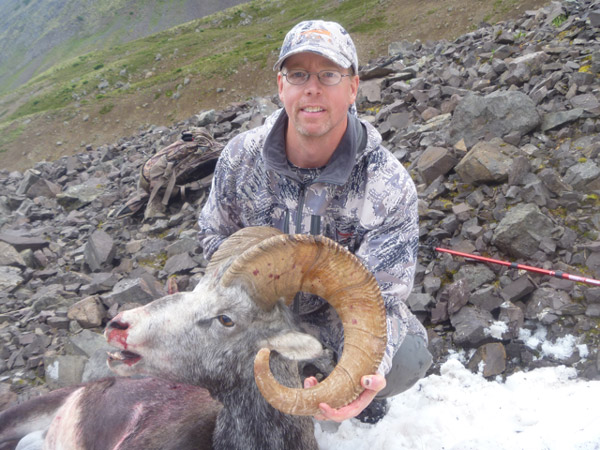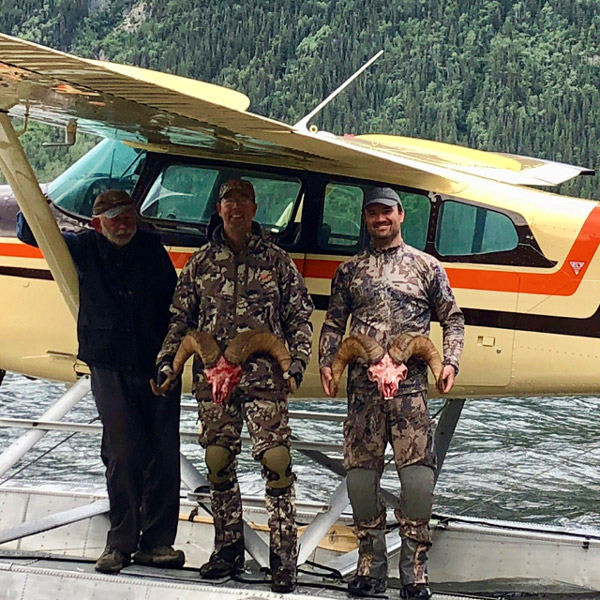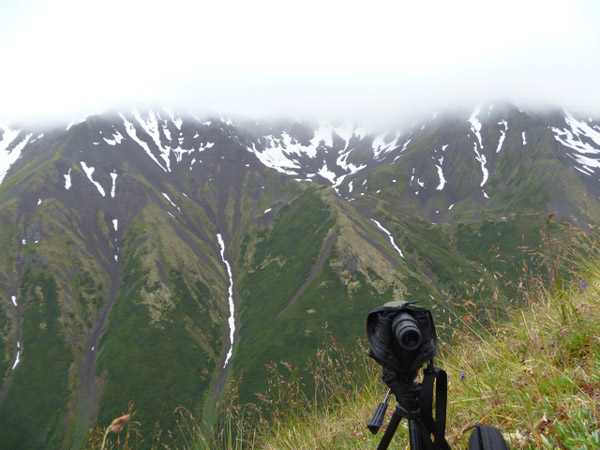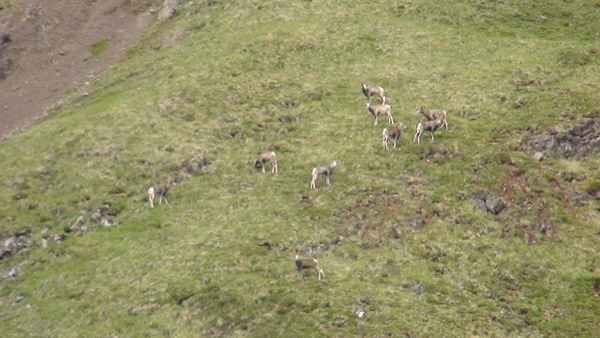Posted by Alan Homer on 2023 Sep 7th
How To Hunt Stone Sheep In British Columbia - Inside MDT
As a British Columbia (B.C.) native, I am very fortunate to be able to hunt Stone Sheep by purchasing an over-the-counter tag, which does not require a guide or outfitter, unlike nonresident hunters. Even with careful preparation and a guide, success is not guaranteed. I've hunted Stone Sheep for years and very seriously for the last ten years. I've taken four sheep myself and witnessed five other harvests from my hunting partners. Sheep hunting is the most physical, demanding, challenging, and fun hunt, but it's not for everyone.

A Stone Sheep I harvested a few years back on a do-it-yourself B.C. Hunt. It's a lot of work but can be very rewarding and unforgettable.
PREPARING FOR YOUR STONE SHEEP HUNT
It all starts at least a year ahead, sometimes even longer, with deciding what area or outfitter to use. It is easier to start if you are a nonresident and need to hire an outfitter, as you can ask for references and see their success rates. Also, for first-timers, the outfitter should have a gear list for you and the fitness level they expect you to be in. For a resident first-timer, this is a little more challenging. You are either looking at maps, talking with other successful sheep hunters, or chatting on a hunting forum, hoping some guys will point you in the right direction. Questions to ask yourself include: Will you fly, boat, or hike in? If you are going to fly, you must book at least a year in advance—sometimes longer. The more information you can gather on an area you will be hunting, the better; this will increase your odds and improve the overall experience. Most hunters (especially those from the lower 48) won't be able to pre-scout an area due to the distance you have to travel to hunt. As a result, physical maps, Google Earth, etc., will be a vital part of your planning.

If you are planning on flying into an area. You'll have to book at least one year ahead of time and maybe even 2, depending on the area you plan on flying into.
Let's now discuss the actual hunting of the sheep. First is glassing. A lot of hours will be spent behind binoculars and a spotting scope. Depending on the area you are hunting, you will either be glassing from a valley bottom or the top of a mountain.
Hunting from the valley bottom will involve walking up or down a valley and glassing the mountainsides for sheep. This is not to be rushed as sheep will bed in nooks and crannies in the mountain and could be just out of sight. Sheep will often rise to stretch, feed, or just change their positions, so persistence and patience will eventually pay off. When sheep are spotted, you must identify them as rams or ewes, and if they are rams, are they worth making a stalk on them? At a distance, it will be hard to identify a ram as legal (to be a legal Stone Sheep Ram in B.C., the tip of one horn must extend past the bridge of the nose OR the ram must be eight years old or older). If he is a real cranker, it can be easy, but if he looks close to legal and warrants a closer look, you will have to devise a plan to get closer. Sheep have eyesight equal to a ten-power pair of binoculars, so you must plan your stalk so you are out of sight. Also, they can smell and hear very well. Remember, the thermals in the morning will go up, and in the evenings, they will change and start descending as the air cools. Make sure you include these facts in your stalk. Moreover, a sudden weather change can also cause the thermals to change.
Next, you owe it to the future of the sheep population to be 100% sure that the ram you are going to take is a mature, legal ram. A few years back, seven rams were harvested in B.C. that did not make the minimum and were confiscated by the C.O.s. Unfortunately, the rams were harvested in the same management unit within two weeks.

Hunting from the mountain ridge tops gives you a lot of country to glass, be careful not to skyline yourself.
Moving on, if you are hunting from the mountain top and walking ridges, it's similar to glassing in the valley. Just make sure not to skyline yourself when you are on a ridge or coming up on the edge of a mountain to glass in a valley or a high basin. They will see you immediately, and any chance of a stalk will be blown. If you are walking in scree, try to find a sheep trail. The trails make what looks like hell to walk through very passable. Again, pay attention to the wind—if a sheep senses or smells danger, they are gone and will keep going until out of sight. Another good tip: if you are closing in on a stalk and you are getting close, put away your walking poles and get your rifle or bow ready. Any metallic noise will send those sheep into another valley. It happened to me once. During a previous hunt, we caught a couple of rams at a water hole. We were about 100 meters away, and they didn't know we were there. When I opened my action to chamber a round, the shell popped up from the magazine, making an audible click. The rams looked our way for a second and then split into the valley, up the other side, over the top of the mountain, and out of sight. They never slowed—they just left for a different mountain range.
In my experience, once you find an area with rams—unless something drastically changes in that region, like a landslide, fire, or human interference—the area should always hold rams. I've repeatedly hunted the same area year after year with great success. But it took many years of trying with many unsuccessful trips to find this area. Of course, with an outfitter, all that work should be done for you; they already know where the Rams frequent.

You will spend hours behind glass; having a good glass is imperative, and having a good pair of binoculars and a good spotting scope will increase your odds of success.
As for areas or markers to glass for sheep, look everywhere. There isn't one clearly defined location they like. It could be near snow patches, grassy slopes, or a particular spot on the side of a mountain. I've also found sheep to pop up in some odd locations at all times of the day. Sometimes you'll be glassing a mountain for hours, and suddenly, you'll see a sheep; persistence (or maybe luck) pays off—be patient. Another tip is when you see a shooter in a group of rams; you must go to the ram; odds are he will not be coming to you. So be prepared for a long day's hike and maybe even a sleepover in a makeshift camp, that is if you don't already have your tent and bag with you. Furthermore, when glassing for sheep in rocks, they tend to blend in. The giveaway for a sheep in the rocks or grass is its white butt—it stands out.

Notice how the white butts on these rams stand out compared to the rest of their bodies. It's even more noticeable when they are directly facing away from you.
I hope this blog helps anyone who is planning on going on a Stone Sheep hunt. It will be one of the toughest hunts of your life. But if you properly prepare for it, it will be one of the most enjoyable, fulfilling, and memorable hunts in your life. Best of luck, everyone; take care and be safe.
HUNTING RESOURCES FROM MDT
- Premium Lightweight Hunting Build
- Hunting Drills for Success
- Necessities for a Backcountry Hunt
- MeatEater Dialing in your Kit for 2023
- Staying Mentally Strong in the Backcountry
- Fitness for Backcountry Hunting
- How Shooting Matches Makes You a Better Hunter
- Tips For A Successful Antelope Hunt
- Analysis: Long-Range Hunting
- Why The Triple Pull CKYE-POD is a Guides Best Friend
- Hunting In Inclement Weather
- Maximize Performance with Mental Imagery
Videos of my 2023 Stone Sheep hunt can be found on my YouTube Channel!
ABOUT THE AUTHOR
Alan Homer lives in British Columbia. He is an accomplished competitive shooter and hunter and owns the BCExtremeOutdoorsman YouTube Channel. He can be reached via Instagram @bcextremeoutdoorsman.


 CAD
CAD
 Euro
Euro
